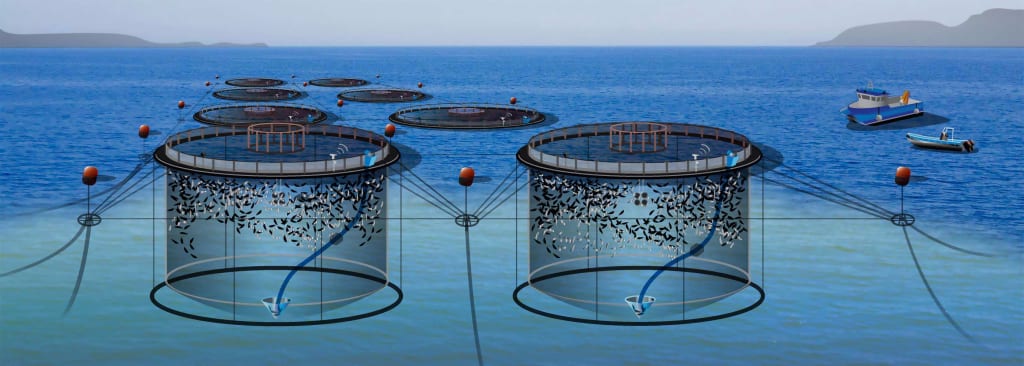Content warning
This story may contain sensitive material or discuss topics that some readers may find distressing. Reader discretion is advised. The views and opinions expressed in this story are those of the author and do not necessarily reflect the official policy or position of Vocal.
U.S. Aquaculture Chemicals Market: The Growth And Development Of The U.S. Aquaculture Industry's Chemical Needs
U.S. Aquaculture Chemicals Market

The domestic aquaculture industry in the United States has seen tremendous growth over the past few decades. As aquaculture operations have expanded and diversified, so too have the chemical needs of these farms. A wider variety of aquatic species are now being cultivated, each with their own unique water quality and health requirements. This has spawned an entire sector focused on developing chemicals tailored specifically for aquaculture.
Water Quality Management Chemicals
One of the most fundamental needs on any Aquaculture Chemicals operation is properly managing the water housing the fish or shellfish. A variety of chemicals have been created to address various water quality parameters. Chemicals that regulate pH, alkalinity and hardness play a crucial role in maintaining optimal water conditions. Fish and shellfish have specific pH and mineral requirements their shells or bodies need to properly develop. Chemicals precisely adjust the balance of acids, bases and minerals in culture systems.
U.S. Aquaculture Chemicals Market Disinfectants And Biocides
Preventing diseases from spreading throughout an aquaculture population is absolutely critical to the economic viability and sustainability of these farms. A wide assortment of disinfectants and biocides are relied upon to control bacteria, viruses, fungi and other potential pathogens. Chemicals with oxidative modes of action like peroxides or hypohalous acids are commonly used to oxidize and destroy organic material harboring diseases. Other antimicrobial agents like glutaraldehydes, iodophors,bronopol and other quaternary ammonium compounds are employed for their efficacy against aquatic microbial contaminants.
Protein Concentrates
As fish and shellfish require protein rich diets to thrive, protein concentrates are a fundamental component of aquaculture feeds. Fishmeal and other whole protein sources are often supplemented or replaced by single cell protein products and hydrolyzed protein concentrates. These specially formulated proteins ensure aquatic animals receive a concentrated and complete source of amino acids, peptides and other nitrogenous nutrients necessary for growth. Producing protein concentrates specifically tailored for different fish and shellfish species diets has become a large specialty chemical market.
U.S. aquaculture chemicals Market Growth Enhancers
Beyond basic nutrition, chemicals can also be utilized to actively enhance the growth rates and feed conversion efficiency of aquaculture stocks. Hormones mimic natural stimuli like thyroid function to accelerate metabolic processes and nutrient partitioning. Certain prebiotics and other non-traditional chemical ingredients may exert synergistic effects when combined with standard feeds. While growth enhancement remains a more limited practice than basic water quality and nutrition, it shows potential to boost production yields for some aquaculture operations.
Pest and Parasite Treatments
Maintaining healthy aquaculture stocks also requires protection from ectoparasites like sea lice which can feast on farmed fish and debilitate entire populations. Chemical treatments may be needed to control planktonic parasite life stages as well as direct application to infested aquatic animals. Similarly, chemical pesticides are sometimes used to kill or repel aquatic invertebrate pests in shellfish aquaculture which may consume crop species. Developing chemical solutions with minimal impacts on non-target species remains an important consideration.
Regulation and Safety
Of course, with any agricultural chemicals comes the need for stringent regulatory oversight and safety evaluation. Aquaculture chemical products undergo intensive toxicological review through agencies like the EPA and FDA before approval for commercial use. Specific tolerances or withdrawal periods are established regarding chemical residue levels allowable in edible aquaculture products intended for human consumption. Manufacturers are also responsible for thorough worker safety programs around chemical handling and application. Overall regulatory standards help ensure both environmental protection and food safety as the aquaculture industry continues expanding production through innovative chemical applications.
Overall, As the U.S. aquaculture industry diversifies its portfolio of aquatic species under culture and intensifies production methods, the need grows for specialized chemical inputs tailored to these new systems. Significant resources continue being invested into research and development of novel water management aids, feeds, health products, and other aquaculture chemicals. With further technical innovation and continued regulatory oversight, aquaculture producers will gain new tools to help meet the seafood demands of growing global populations in an economically and environmentally responsible manner.
Get more insights on this topic: https://benstiller.hashnode.dev/us-aquaculture-chemicals-market-aquaculture-market-poised-for-growth-with-increasing-demand-for-chemical-solutions
About the Creator
Enjoyed the story? Support the Creator.
Subscribe for free to receive all their stories in your feed. You could also pledge your support or give them a one-off tip, letting them know you appreciate their work.





Comments
There are no comments for this story
Be the first to respond and start the conversation.